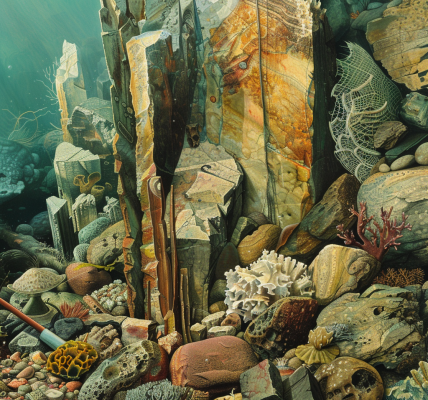Fractals are patterns that are self-similar across multiple length-scales. Macroscopic fractals are common in nature; however, molecular assembly into fractals has been restricted to synthetic systems. A recent study published in Nature has reported the emergence of a natural protein, citrate synthase from the cyanobacterium Synechococcus elongatus, which self-assembles into Sierpiński triangles.
The research, conducted by Franziska L. Sendker, Yat Kei Lo, Thomas Heimerl, and a team of scientists, utilized cryo-electron microscopy to reveal how the fractal assembles from a hexameric building block. The study found that different stimuli can modulate the formation of fractal complexes, and these complexes can regulate the enzymatic activity of citrate synthase in vitro.
Despite the discovery, the study suggests that the fractal may not serve a physiological function in vivo. Ancestral sequence reconstruction was used to trace how the citrate synthase fractal evolved from non-fractal precursors, indicating it may have emerged as a harmless evolutionary accident.
Fractals are repeating patterns in which substructures at smaller scales resemble structures at larger scales. Most natural fractals are irregular, with their self-similarity emerging from similar levels of detail in structures formed at different scales. The rare examples of regular fractals in nature, such as the repeating structures in Romanesco broccoli, have been intensely studied to understand the underlying mechanisms that produce exact self-similarity.
While all known regular fractals in nature are made by living organisms and exist at the macroscopic scale, none have been discovered at the molecular scale despite the diversity of biomolecular assemblies known to science. The difficulty in translating fractal construction algorithms into molecular self-assembly has posed a challenge in identifying molecular-scale fractals in nature.
This groundbreaking study expands the understanding of protein complexes and demonstrates that intricate and regulatable assemblies can evolve from a single substitution. The discovery of a natural protein self-assembling into fractals sheds light on the potential complexity and beauty of molecular-scale structures in nature.





